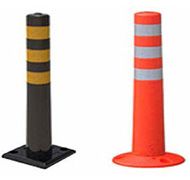Introduction
Purpose of the article
The purpose of this article is to examine the impact of speed bumps on emergency vehicles in Ohio. Speed bumps are commonly used to slow down traffic in residential areas and other locations where speed limits are low. However, they can also pose a challenge for emergency vehicles that need to respond quickly to emergencies. This article will explore the potential effects of speed bumps on emergency response times and the safety of both emergency personnel and the public. Additionally, we will examine any existing policies or guidelines related to the installation and use of speed bumps in Ohio and discuss potential solutions to mitigate their impact on emergency vehicles.
Background information on Ohio speed bumps
Ohio speed bumps are a common traffic calming measure used to reduce vehicle speeds in residential areas, school zones, and other areas where pedestrian safety is a concern. These speed bumps are typically made of asphalt or concrete and are designed to slow down vehicles to a safe speed limit. While speed bumps are effective in reducing vehicle speeds, they can also have negative impacts on emergency vehicles, such as ambulances and fire trucks, which need to respond quickly to emergencies. The placement and design of speed bumps can affect emergency response times, which can have serious consequences for public safety. As such, it is important to consider the impact of speed bumps on emergency vehicles when designing and implementing traffic calming measures.
Importance of emergency vehicles
Emergency vehicles play a crucial role in saving lives and responding to critical situations. They are equipped with specialized equipment and trained personnel to provide immediate medical attention, transport patients to hospitals, and respond to emergencies such as fires, natural disasters, and accidents. In situations where every second counts, the ability of emergency vehicles to reach their destination quickly and safely can mean the difference between life and death. Therefore, it is essential to ensure that emergency vehicles have unobstructed access to their destination, and any obstacles that may hinder their progress, such as speed bumps, should be carefully evaluated to ensure they do not impede emergency response times.
Ohio Speed Bumps and Emergency Vehicles
Types of speed bumps in Ohio
Ohio has several types of speed bumps that are used to control speed in different areas. The most common type is the traditional speed bump, which is a raised hump that spans the width of the road. Another type is the speed hump, which is longer and flatter than the traditional speed bump. Ohio also uses speed cushions, which are smaller and spaced out to allow emergency vehicles to pass through without slowing down. Finally, Ohio has installed rumble strips, which are grooves in the pavement that create a vibration and noise when a vehicle drives over them. Each type of speed bump has its own advantages and disadvantages, and their impact on emergency vehicles varies.
Impact of speed bumps on emergency vehicles
Speed bumps are a common traffic calming measure used in many cities and towns across the United States, including Ohio. However, these bumps can have a significant impact on emergency vehicles, such as ambulances and fire trucks, that need to respond quickly to emergencies. The jarring motion caused by speed bumps can cause damage to emergency vehicles, leading to costly repairs and potential delays in response times. Additionally, the need to slow down significantly to navigate speed bumps can add precious seconds to emergency response times, potentially putting lives at risk. As such, it is important for city planners and officials to carefully consider the placement and design of speed bumps to minimize their impact on emergency vehicles.
Case studies of emergency vehicle delays caused by speed bumps
Several case studies have been conducted to analyze the impact of Ohio speed bumps on emergency vehicles. One such study was conducted by the Ohio Department of Transportation, which found that speed bumps caused an average delay of 10-15 seconds for emergency vehicles. Another study conducted by the Ohio State Highway Patrol found that speed bumps caused delays of up to 30 seconds for emergency vehicles. These delays can be critical in emergency situations where every second counts, and can potentially lead to loss of life or property damage. Therefore, it is important to carefully consider the placement and design of speed bumps to minimize their impact on emergency response times.
Possible solutions to mitigate delays
One possible solution to mitigate delays caused by Ohio speed bumps for emergency vehicles is to install speed humps instead. Speed humps are longer and flatter than traditional speed bumps, allowing emergency vehicles to pass over them at a higher speed without causing damage to the vehicle or risking the safety of the occupants. Additionally, speed humps can be designed to be more visible and easily identifiable to drivers, reducing the likelihood of accidents and improving overall traffic flow. Another solution is to implement a system of preemption, where emergency vehicles are equipped with devices that can change traffic signals to green as they approach, allowing them to move through intersections more quickly and safely. These solutions can help ensure that emergency vehicles can respond to calls quickly and efficiently, without being delayed by speed bumps.
Legal and Safety Considerations
Ohio laws and regulations on speed bumps
Ohio has specific laws and regulations regarding the installation of speed bumps. According to the Ohio Department of Transportation, speed bumps can only be installed on private property and not on public roads. Additionally, speed bumps must meet certain criteria, such as being no higher than three inches and having a gradual slope. The installation of speed bumps must also be approved by the local government and comply with the Americans with Disabilities Act (ADA) guidelines to ensure accessibility for individuals with disabilities. These regulations aim to balance the need for traffic calming measures with the safety and accessibility of all road users.
Safety concerns for emergency vehicles and patients
Emergency vehicles are often required to respond to critical situations that require quick and efficient transportation of patients to medical facilities. However, the presence of speed bumps on Ohio roads can pose a significant challenge to emergency vehicles. The sudden jolts caused by speed bumps can cause discomfort and pain to patients who are already in a vulnerable state. Additionally, the need for emergency vehicles to slow down significantly to navigate speed bumps can lead to delays in response times, which can be life-threatening in critical situations. Therefore, it is essential to consider the impact of speed bumps on emergency vehicles and patients and find ways to mitigate their negative effects.
Recommendations for safe and effective use of speed bumps
To ensure the safe and effective use of speed bumps Ohio, it is recommended that they are installed in areas with low traffic volume and speed limits of 25 mph or less. Additionally, emergency vehicle access should be considered during the design and placement of speed bumps. It is important to maintain proper signage and markings to alert drivers of the presence of speed bumps. Regular maintenance and repair of speed bumps is also crucial to prevent damage to vehicles and ensure their effectiveness in reducing speed. Finally, community education and awareness campaigns can help promote safe driving behavior and reduce the need for speed bumps altogether.
Conclusion
Summary of key points
In summary, Ohio speed bumps have a significant impact on emergency vehicles. The use of speed bumps can delay response times and potentially put lives at risk. However, there are alternative solutions such as speed humps and rumble strips that can still slow down traffic without hindering emergency vehicles. It is important for municipalities to consider the needs of emergency responders when implementing traffic calming measures. Collaboration between city officials and emergency services can lead to a safer and more efficient response system.
Implications for emergency services and communities
The implications of Ohio speed bumps on emergency services and communities are significant. Emergency vehicles are often delayed by speed bumps, which can result in longer response times and potentially life-threatening situations. Additionally, communities may experience frustration and dissatisfaction with emergency services if they perceive that response times are too slow. It is important for communities to consider the placement and design of speed bumps to ensure that emergency vehicles can navigate them safely and efficiently. Collaboration between emergency services and local government officials can help to address these concerns and ensure that communities are both safe and satisfied with emergency services.
Future directions for research and policy
Future directions for research and policy should focus on finding a balance between the safety benefits of speed bumps and the potential negative impact on emergency vehicles. One potential solution could be the implementation of speed humps, which are longer and flatter than traditional speed bumps, allowing emergency vehicles to pass over them more easily. Additionally, further research should be conducted on the effectiveness of alternative traffic calming measures, such as roundabouts and chicanes, in reducing speed and increasing safety without hindering emergency response times. Policymakers should also consider implementing exemptions for emergency vehicles or creating designated emergency vehicle lanes to ensure timely response to emergencies. Overall, a comprehensive approach that considers both safety and emergency response needs is necessary to address the impact of speed bumps on emergency vehicles.











